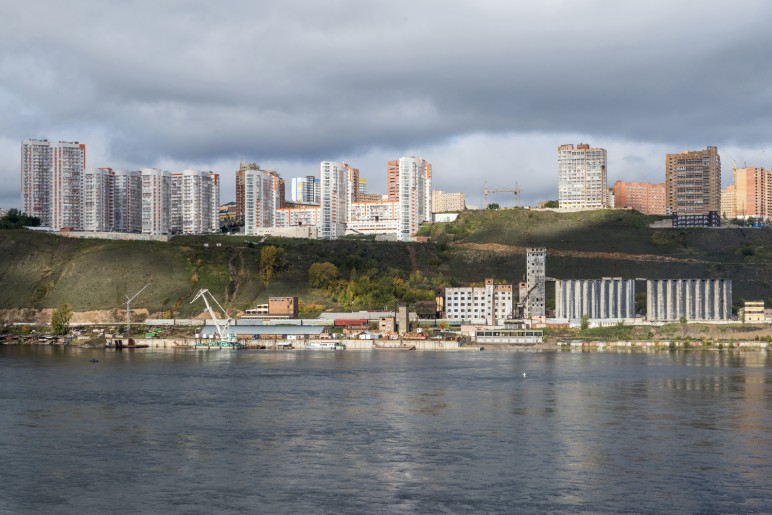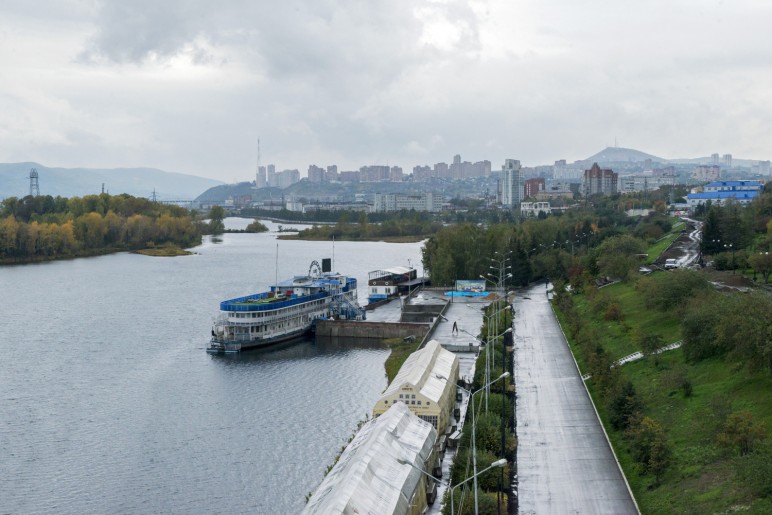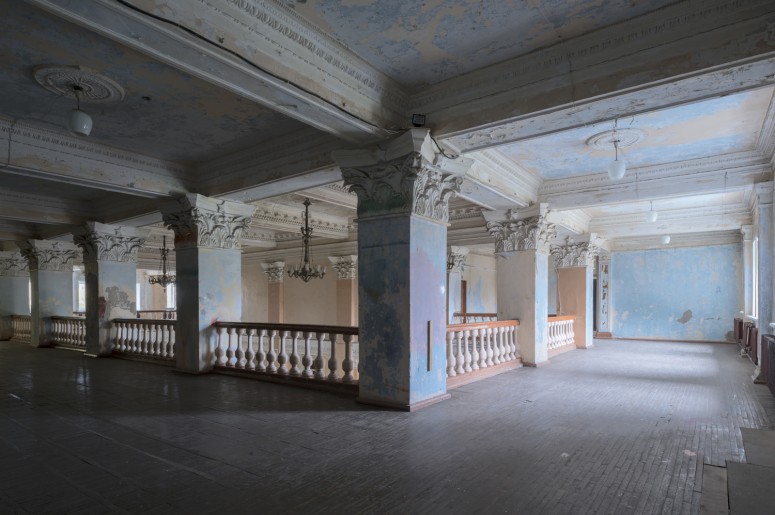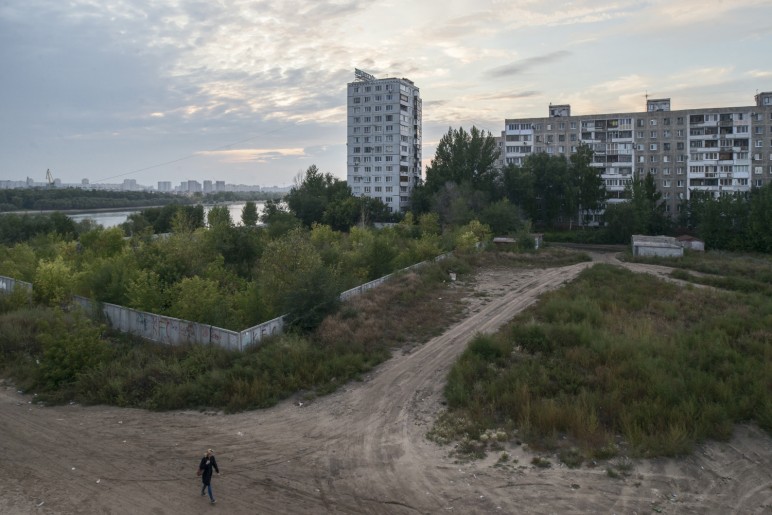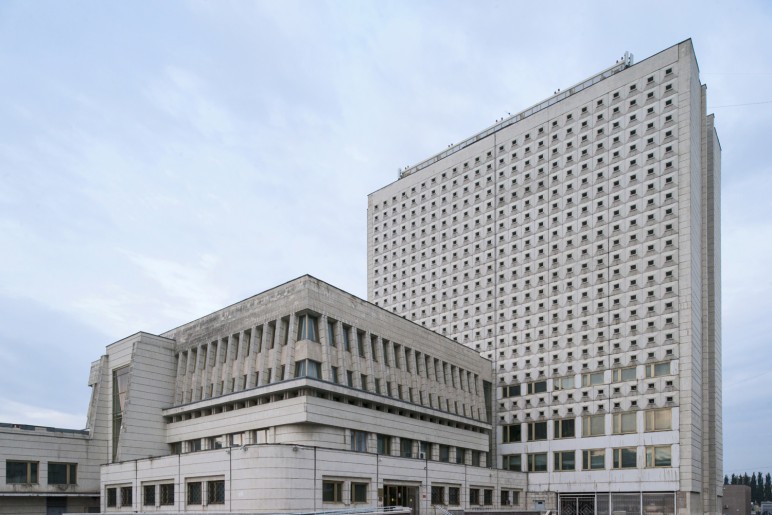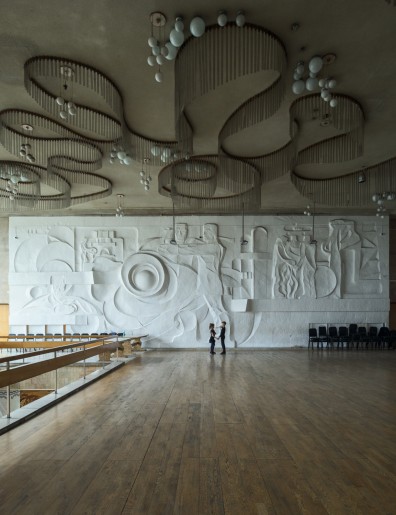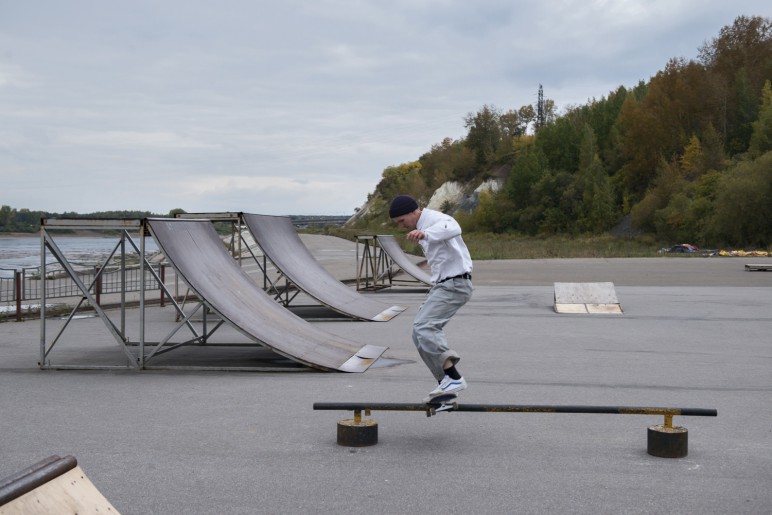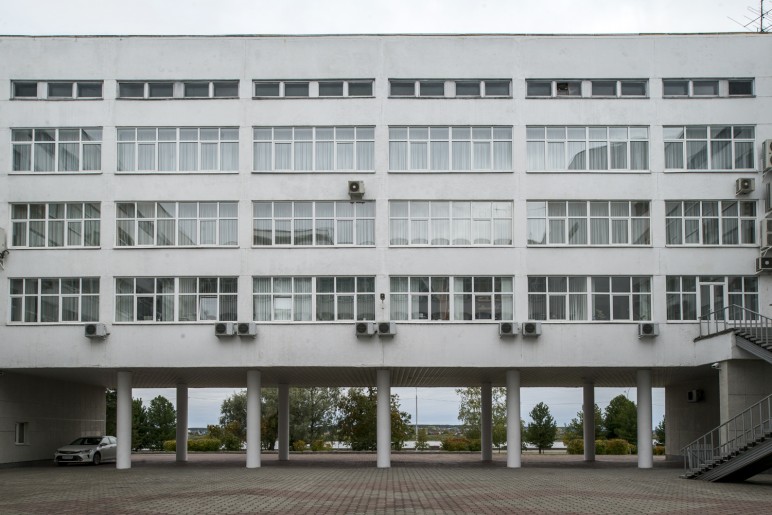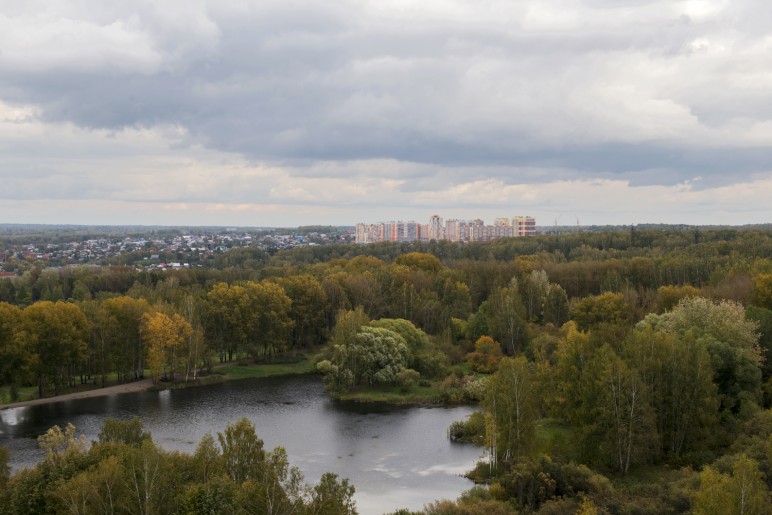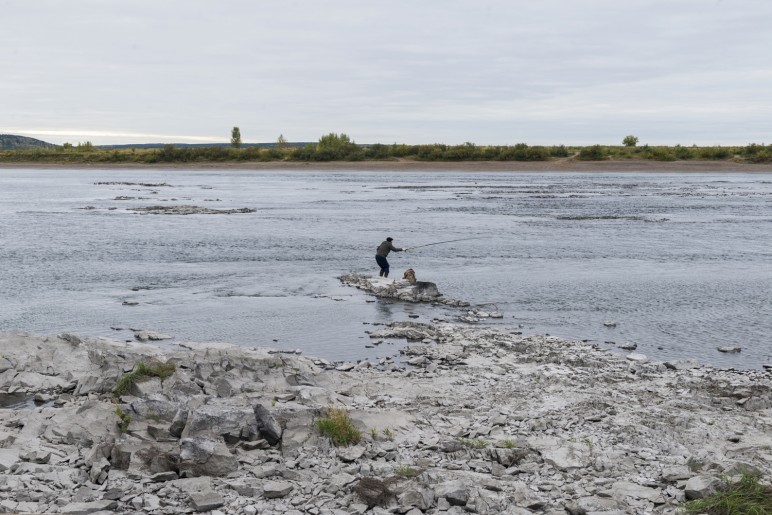Introduction: welcome to the enchanting, enigmatic land of Siberia
A green and white striped banner is painted on a canvas — its corner decorated not with stars, but snowflakes. The writing underneath reads: “United States of Siberia”.
This was the main piece in an exhibition in the Siberian city of Tomsk — and it became a cultural lightning rod for a deep-seated local pride. It was first exhibited at art collector Marat Gelman’s 2013 Russian Poor Art show that sought to place itself at the forefront of a new Siberian art. After its premiere, the show travelled to Moscow, St Petersburg, New York and London.
The fate of the title exhibit, however, was even more striking.
Taking the media speculations at face value, one might conclude it was only a matter of time until the sleeping giant awoke.
Dmitry Muratov’s United States of Siberia flag has been adopted by a variety of movements calling for the secession of Siberia, albeit with different levels of sincerity. If the residents of Novosibirsk had been permitted to hold a march in favour of federalisation in 2014, it would have been possible to see the banner in action. It is a work with which any native Siberian can identify, embodying the arid, frosty and self-deprecation that is so intrinsic to these places.
It touches on a raw nerve in Siberia, where the issue of greater autonomy bubbles up every few years. As well as the abovementioned march, the topic was a major talking point during the most recent nationwide census conducted in 2010. The survey revealed a growth in references to the word ‘Siberian’ and triggered a glut of articles on the topic.
This hasn’t happened – at least not yet. Years later, the alarmist mood seems overblown.
But the question of Siberian separatism remains, just as it has existed for generations, mostly out of sight. Significantly, the theses put forward by proponents of Siberian regionalism in 1850 remain eerily pertinent today. Then, as now, it was a sense of injustice at the plundering by conquistadors from the west that topped the list of local grievances.
These grievance are by no means unjustified. Then, as now, Siberia’s vast natural wealth is the backbone of Russia’s economy. The idea of Siberia as “our everything” has long been rooted in the Russian public consciousness — meaning everything from reserves of mineral resources (Siberia is home 85% of Russia’s lead and platinum reserves, 80% of its coal and 71% of its nickel) to the region’s role in supplying the majority of Russia’s exports. The Kremlin has also suppressed self-governance in the region, with the abolition of the direct election of local governors and a crackdown on the 2014 independence march. The agglomeration of these factors is enough to explain the rise of cultural initiatives like the creation of a Siberian language, or the United States of Siberia flag. There is a stereotype of spoiled Muscovites that contrasts with the austere and uncouth, but kind-hearted, Siberians. In Siberia’s eyes, the capital doesn’t know, doesn’t understand and doesn’t want to listen.
However, the question that interests us here is a different one: does Siberia really understand itself?
The enormous region encompasses dozens of ethnicities, several time zones and a variety of environmental zones, from tundra to steppe. It’s hard to imagine the oil worker’s problems in Surgut are in any way related to the concerns of a farmer in the Altai mountains. Sadly, Siberia is also hamstrung by the state of its transport infrastructure. As you venture further into Asia, the road network becomes sparser and sparser, only connecting the cities, which lie hundreds of kilometres apart. A desire to leave is perhaps one of the few factors uniting all Siberians: according to research carried out by Moscow’s Higher School of Economics, the Siberian Federal District has experienced unbroken annual population outflows since the early 1990s. According to data from the 2010 census that put Siberian separatism back on the agenda, only 4,000 people defined themselves as Siberians. A figure of this size seems too insignificant to generate any serious discussion of a new identity.
Nonetheless, nobody can say Siberians have nothing to unite them. There is a Siberian identity, and its determinants should be sought in the past. Throughout history, the development of Siberia took place along two vectors: the romantic search for a free and promised land, and the pragmatic construction of urban centres. It is the latter we should focus our attentions on. Siberia is home to oil cities, diamond cities and cities for metallurgy. There is an academic city and an energy city, there are fort cities and outpost cities. The concept of cities totally dependent on just one industry (a common phenomenon in the region), is a helpful way of understanding urban planning. Here, settlements are needed only to serve a particular industry, and they have often come into existence with the stroke of a ruler’s pen. Legend has it that this was how Tsar Alexander III planned the route of the Trans-Siberian Railway.
In the 20th century, a programme of systematic city building led to the rapid industrialisation. The Soviet construction of those years mirrored man’s first space flight: just as in the cold expanses of space, so too in the icy Siberian taiga was humanity pushing the frontiers of possibility. Later, a technocratic intelligentsia was drawn to Siberia, echoing the romantic zeal of the first settlers. Here they found open air and a limitless sky – a space for growth. Their artistic and intellectual achievements were the seeds from which Siberia’s creative revolution emerged.
Like a younger brother, Siberia has always been eager to keep up and know what’s happening over there, on the far-flung mainland.
This is how it looks to me. I am typical for a Siberian, having grown up in a frost-petrified town on the edge of the earth, I fled to the ‘mainland’ at the first opportunity. Coming from a family of engineers, I was always interested in how and why people came to this Arctic wilderness I call home. Many ended up in my native city not for higher wages or because of the availability of goods during the Soviet period, but out of simple human curiosity. It is this curiosity, reflected in the descendants of the settlers, that has always pushed Siberian self-development. One of the most valuable items I was able to bring back home from Moscow was a hard drive filled with films, music and books — an unprecedented luxury for those living in a place where unlimited internet is fantastically expensive.
The phrase “You Don’t Represent Us” became a symbol of Novosibirsk’s absurdist Monstratsiya rallies – themselves an original Siberian cultural phenomenon. Although these words were first coined by St Petersburg artist Pavel Arsenev, they are almost a perfect fit for Siberia’s sporadic creative industries.
If you don’t want to miss the cultural revolution taking place before your eyes, the time has come try and understand who represents Siberia.
Makers of Siberia, a new online platform which launches today, will present the ideas, people and small businesses shaping Siberia’s cultural community. One of the aims of this platform is to locate this originality in people, not shying away from the capital’s patronage, the product of that very same ‘elder brother syndrome’. Modern Siberia is not some canvas of possibility, but something that is rapidly developing. Those represented on this platform are not the founding heroes of emerging creative industries, but just some of the many talented and exceptional people who already exist.
